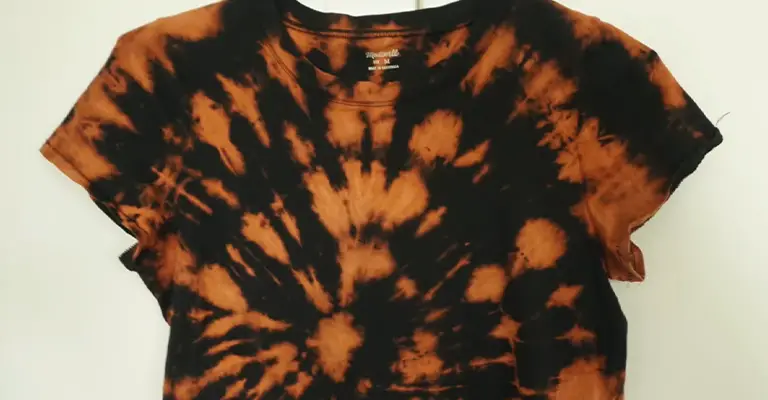Bleach is one of the most over-estimated and misunderstood cleaning products on the market. We need to use bleach for many purposes professionally or just in our homes. Sometimes when you spray it, you may have seen the solution turns black, but it remains clear in the bottle.

So why does bleach turn black? It’s because the chlorine bleach is reacting with the metal spring in the spray bottle, causing it to corrode and turning the white bleach into dark brown or black. To avoid this problem, you can mix water with bleach. For more information, stay tuned.
What Are the Usages of Bleach that Turn Black
Bleach is a very useful chemical for both home and commercial use. Bleach can be used to remove stains from clothing or to whiten laundry. It’s also used to disinfect surfaces, particularly in the kitchen and bathroom. You might have tried bleach to get rid of mold and mildew.
Hospital personnel uses bleach as a disinfectant, hotels use bleach to clean and disinfect bed linens and surfaces, and restaurants use chlorine bleach to disinfect food preparation surfaces. Companies use chlorine bleach to reduce the odor in their wastewater.
Chlorine is also used in the glass, chemical, pharmaceutical, textile, agriculture, paint, and paper industries. To clean the water and raise the pH chlorine is used in swimming pools, and also in much lower concentrations to help keep municipal water supplies free of harmful organisms.
Is Bleach color Black?
Bleach is a white substance, so when you see black bleach coming from the spray bottle although you see the bleach is not actually dark if the bottle is transparent. But after a bit of time, you see the bleaching liquid is not black or brown anymore. Why does it happen?
Well, it happens because bleach chemical interacts with something on its way. Unmixed bleach in a spray bottle will turn black as it corrodes the sprayer’s spring mechanism. It causes the metal to oxidize. The bleach should not do this when mixed with water.
Can Bleach Turn Things Black?
Usually, bleach works to weaken the ability of a substance to absorb light, which makes the fabrics or many other materials seem to be ‘whitening’. However, bleach can turn some materials black! For example, any object made with iron can turn black after coming in contact with bleach.
If you somehow put any of your stainless steel parts in contact with bleach, that has chromium in the alloy and chromium oxide on the surface, the bleach will dissolve the protective surface. And then bleach will cause the steel to corrosion. For this corrosion, we think the bleach turned the metal black or dark brown.
Why Does Bleach Turn Black Clothes to Red?
Bleaching black clothes will turn them always red when you’re referring to chlorine bleach. Other bleaches, oxygen, for example, are color-safe. If you used chlorine, the answer is simply that you didn’t use enough chlorine or a strong enough concentration to completely remove the black color.
The concentration of chlorine in most household products is around 5%. Even with strong bleach, you’ll have to repeat the process several times to achieve the desired color level. And even then, it won’t be uniform. For this reason, not all dye will be removed from your black fabric, the red dye will still be on it and give you a red vibe.
FAQs (Frequently Asked Questions)
When does bleach become weaker?
The presence of metal ions is known to catalyze the decomposition of liquid bleach, resulting in strength loss and oxygen formation. When using bleach as a disinfectant, the loss of sodium hypochlorite strength means that more product is required.
What are the distinctions between Trichlor tablets and liquid Chlorine?
Trichlor tablets gained popularity as they are easy to use, but they actually provide certain drawbacks for pool owners over time due to a residual chemical by-product left behind after continuous use. On the other hand, liquid chlorine or bleach doesn’t come with this drawback, but you gotta be careful while using it.
What should I keep in mind while using bleach on fabric?
Bleach works best at 150 degrees Fahrenheit or higher, and it prefers a pH of greater than 10 but less than 12. Color removal with minimal fabric damage is possible in this range. Also, before drying, thoroughly rinse the bleach off or it will be activated by the heat in the dryer and will degrade the fabric quickly.
Ending Statement
Knowing why bleach turns black is not enough to work with bleach, make sure to learn about all the important info beforehand to avoid problems afterward. Take proper precautions while working with bleach, don’t touch the liquid, but if you come into contact accidentally, run water continuously and seek emergency help.
Leave a Reply